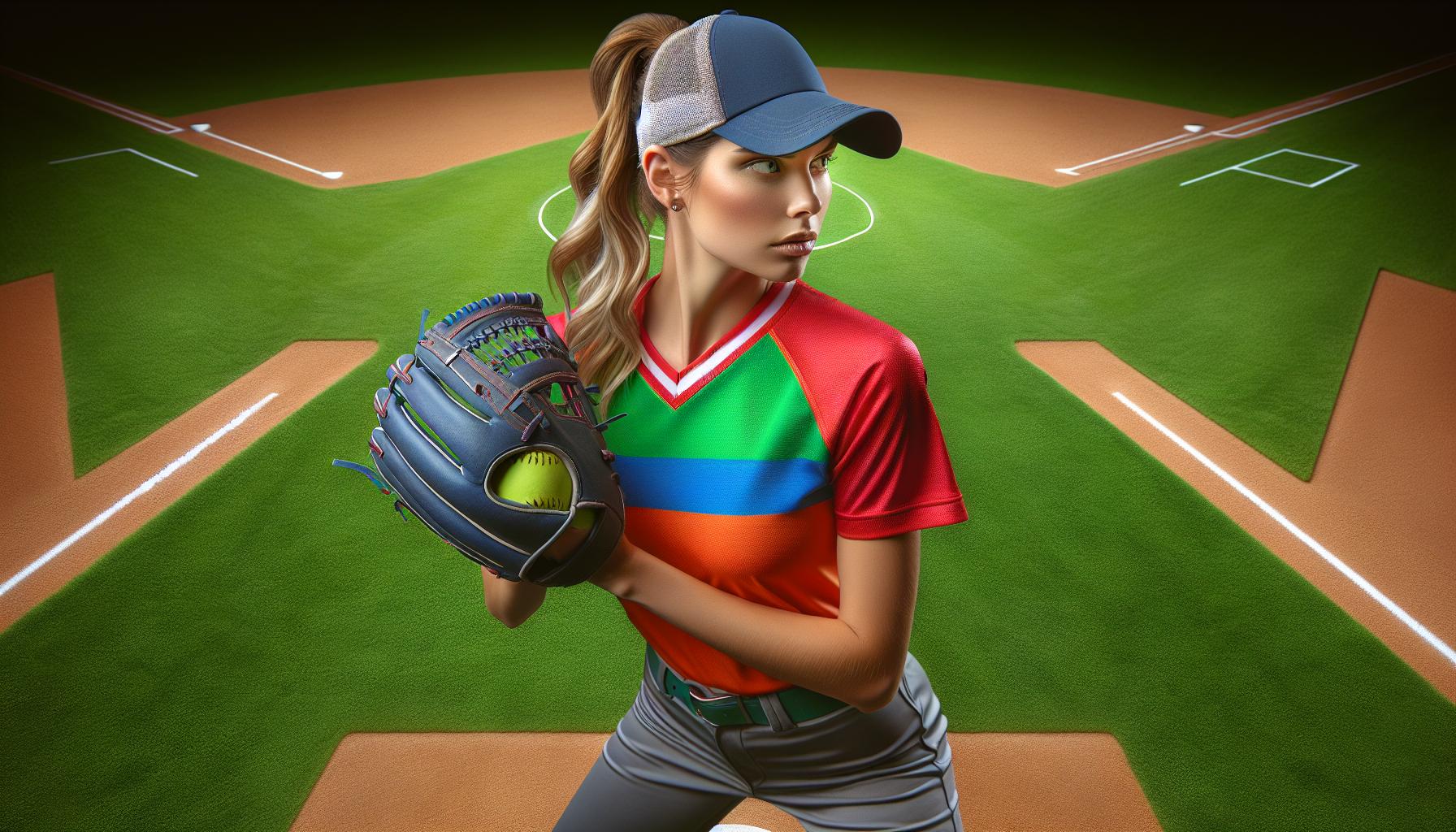
What Is Harder: Softball or Baseball? Comprehensive Comparison
Softball and baseball share many similarities, yet enthusiasts often debate which sport presents greater challenges. Both require a blend of athleticism, strategy, and teamwork, but the differences in gameplay and skills tested can influence perceptions of difficulty.
From pitching styles to field dimensions, each sport demands unique techniques and physical demands. Softball players face underhand pitches and a larger field, while baseball athletes deal with overhand throws and faster-paced games. Understanding these nuances helps shed light on what makes one sport potentially harder than the other.
Whether you’re a seasoned player or a curious fan, exploring the intricacies of softball and baseball can reveal the complexities that set these beloved sports apart.
Physical Demands
Both softball and baseball impose distinct physical requirements on players, influencing their training and performance strategies.
Strength And Conditioning
Softball players engage muscles differently due to underhand pitching, necessitating core and lower body strength. Baseball players rely on upper body power for overhand throws and bat swings. Strength training routines include:
- Softball:
- Core exercises (e.g., planks, Russian twists)
- Lower body workouts (e.g., squats, lunges)
- Flexibility drills to enhance pitching mechanics
- Baseball:
- Upper body strength (e.g., bench press, pull-ups)
- Explosive movements (e.g., medicine ball throws)
- Rotational exercises for batting power
Endurance Requirements
Endurance levels vary between the two sports due to differences in game pace and field size.
| Aspect | Softball | Baseball |
|---|---|---|
| Game Duration | Typically 7 innings | Typically 9 innings |
| Field Size | Larger infield and outfield dimensions | Smaller, more compact field layout |
| Pace | Slower, with longer intervals between plays | Faster, with quicker transitions |
Softball players require sustained stamina for longer fields and extended game durations, while baseball players need quick bursts of energy to handle a faster-paced game.
Technical Skills

Technical skills significantly impact the complexity of softball and baseball. Each sport requires specialized techniques that shape player effectiveness and overall gameplay.
Hitting Techniques
Softball hitters face underhand pitches, necessitating a distinct swing path and timing adjustment. Their stance typically involves a wider base to accommodate the slower pitch speed and higher release point. In contrast, baseball hitters encounter overhand pitches delivered at higher velocities, demanding quicker hand-eye coordination and a more compact swing. Additionally, baseball swings often require greater bat speed to make contact with faster-moving pitches, increasing the technical precision needed for effective hitting.
Pitching Mechanics
Softball pitchers utilize an underhand motion, emphasizing core and lower body strength to generate power and control. This pitching style involves a windmill motion that requires fluidity and endurance to maintain accuracy over extended periods. Conversely, baseball pitchers employ an overhand or three-quarters delivery, focusing on upper body strength and explosive movements. The overhand pitch allows for greater velocity and varied pitch types, such as fastballs and curveballs, but demands precise mechanics to prevent fatigue and injury. These differing pitching techniques highlight the unique technical demands each sport places on its pitchers.
Gameplay Differences
Softball and baseball exhibit distinct gameplay mechanics that influence their respective levels of difficulty. These differences shape how players approach fielding and strategic decision-making.
Fielding Challenges
Softball fields are larger, requiring quicker lateral movements and longer throws to make plays. The underhand pitching in softball results in slower ball speeds, demanding precise timing and positioning from infielders. In contrast, baseball fields are smaller with shorter distances between bases, emphasizing rapid reaction times and stronger arm throws. Baseball’s overhand pitches increase ball velocity, challenging fielders to track and react swiftly to high-speed trajectories.
Strategic Elements
Strategic planning varies significantly between softball and baseball. Softball strategies often focus on bait-and-switch tactics and base stealing due to the sport’s emphasis on endurance and field size. Managers prioritize defensive positioning to cover larger gaps and anticipate longer play sequences. Baseball strategies leverage the higher pitch speeds and smaller field dimensions, emphasizing pitch selection, defensive shifts, and quick offensive plays. Teams in baseball frequently use specialized pitching rotations and defensive alignments to exploit the faster pace and tighter field space.
Competitive Environment
Both softball and baseball feature structured competitive environments, encompassing multiple levels of play and demanding training intensities.
Levels Of Play
Softball and baseball offer various competitive tiers, including youth leagues, high school teams, collegiate programs, and professional levels.
- Youth Leagues: Accessible to ages 5-12, focusing on skill development and participation.
- High School: Structured competition with regional and state championships.
- Collegiate: NCAA divisions I, II, III for baseball; ASA and NCAA for softball, featuring national tournaments.
- Professional: Baseball has Major League Baseball (MLB) with extensive minor leagues; softball has limited professional opportunities primarily in women’s leagues.
Training Intensity
Competitive levels demand rigorous training regimens tailored to each sport’s requirements.
- Softball: Emphasizes core strength and endurance, incorporating exercises like planks, squats, and long-distance running to handle larger fields and longer games.
- Baseball: Focuses on upper body power and explosive movements, including bench presses, medicine ball throws, and sprint drills to manage faster-paced gameplay and overhand pitching.
Training schedules often include daily practices, strength training sessions, and strategic game simulations to enhance performance at higher competition levels.
Personal Considerations
Personal factors play a significant role in determining whether softball or baseball is harder for an individual. These factors include athlete preferences and available career opportunities.
Athlete Preferences
Athletes select between softball and baseball based on their personal interests and physical strengths. Preferences include:
- Pitching Style: Softball utilizes underhand pitching, which emphasizes core and lower body strength. Baseball employs overhand pitching, requiring upper body power and precise mechanics.
- Game Pace: Softball features a slower pace with larger fields, promoting endurance and strategic base running. Baseball offers a faster-paced game with smaller fields, focusing on quick reflexes and explosive movements.
- Demographics: Softball predominantly attracts female athletes, while baseball is primarily male-dominated. However, both sports are increasingly inclusive, allowing diverse participation.
- Skill Sets: Players may prefer the distinct skill sets each sport demands. Softball requires timing adjustments for underhand pitches, whereas baseball demands rapid hand-eye coordination for high-velocity pitches.
Career Opportunities
Career prospects vary between softball and baseball, influenced by the structure and availability of professional pathways:
- Professional Leagues:
- Baseball: Major League Baseball (MLB) consists of 30 teams, with extensive minor league systems and international leagues offering numerous professional opportunities.
- Softball: Professional opportunities are more limited, primarily within women’s leagues and international competitions.
- Collegiate Scholarships:
- Both sports offer scholarships at the NCAA and NAIA levels, supporting athletes in higher education while competing.
- Coaching and Training:
- Career roles include coaching at various levels, sports training, and athletic administration for both softball and baseball.
- Sports Management and Medicine:
- Opportunities exist in sports management, marketing, and sports medicine, catering to backgrounds in either sport.
- International Opportunities:
- Baseball has a broader international presence with leagues in Japan, South Korea, and Latin America. Softball is also played internationally but with fewer professional structures.
| Career Path | Baseball | Softball |
|---|---|---|
| Professional Leagues | MLB (30 teams), minor leagues | Primarily women’s leagues |
| Collegiate Scholarships | NCAA, NAIA | NCAA, NAIA |
| Coaching Opportunities | Extensive at all levels | Available in schools and clubs |
| International Leagues | Japan, South Korea, Latin America | Limited international presence |
These personal considerations help athletes assess which sport aligns better with their preferences and career aspirations.
Conclusion
Choosing between softball and baseball ultimately depends on individual strengths and preferences. Each sport offers unique challenges that cater to different athletic abilities and strategic minds. Whether you thrive on the endurance and core strength required in softball or the explosive power and quick reflexes needed in baseball, both games provide rewarding experiences. Embracing the distinct demands of each can lead to personal growth and a deeper appreciation for the nuances of these beloved sports. Players and fans alike can find their place by understanding what makes each game special and deciding which aligns best with their skills and passions.
